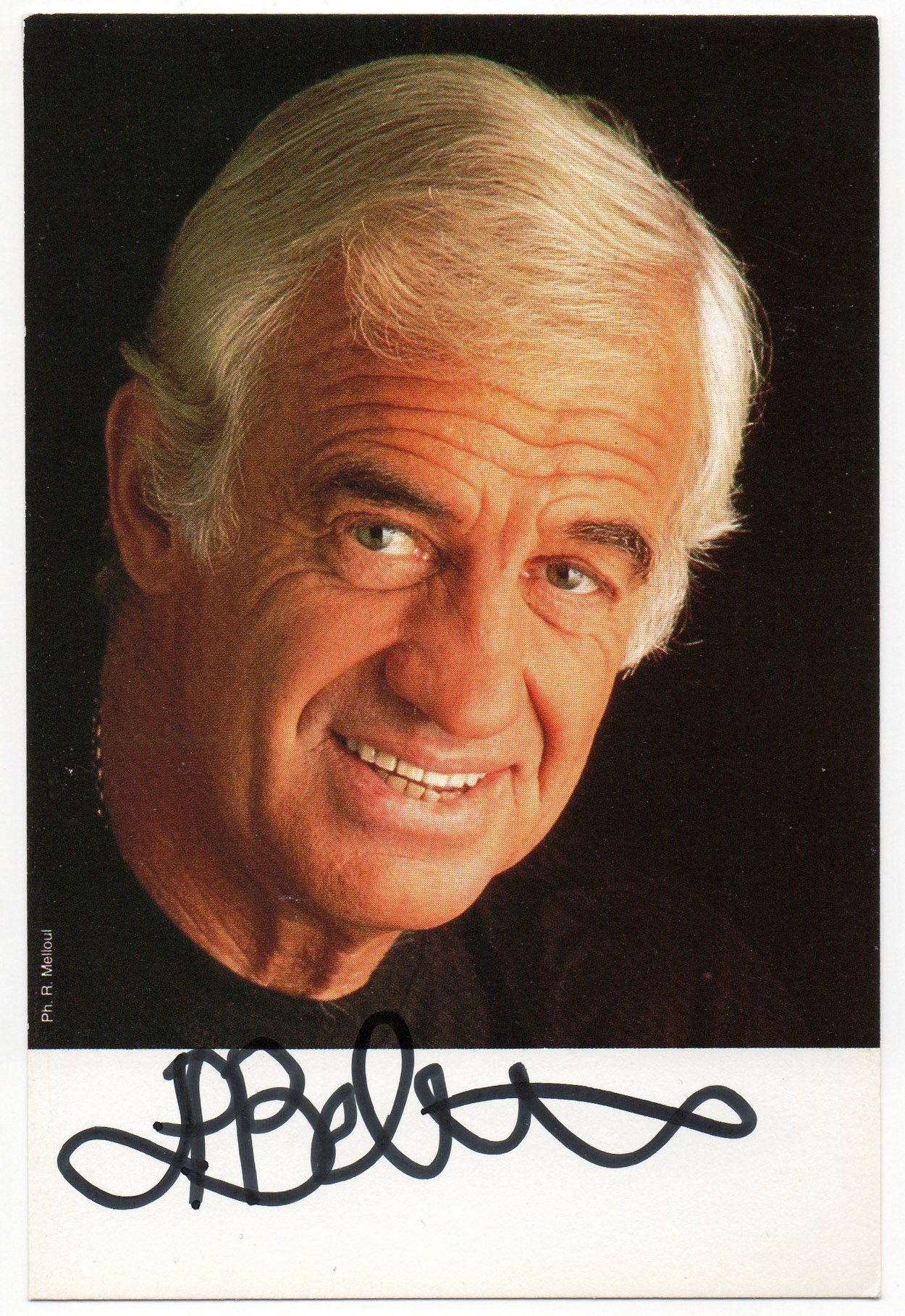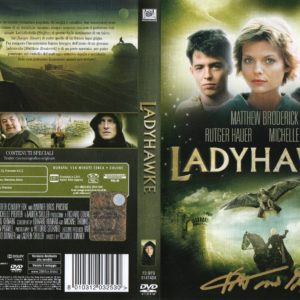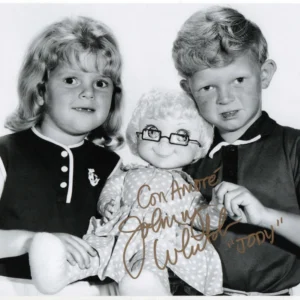Description
JEAN-PAUL BELMONDO BIOGRAFIA :
Jean-Paul Belmondo (9 April 1933 – 6 September 2021) was a French actor initially associated with the New Wave of the 1960s and a major French film star for several decades from 1960s. His best known credits include Breathless (1960) and That Man from Rio (1964).
Career
Early life
Jean-Paul Belmondo was born in Neuilly-sur-Seine, Seine, now Hauts-de-Seine, on 9 April 1933. Belmondo’s father, Paul Belmondo, was a Pied-Noir sculptor who was born in Algeria of Italian descent, whose parents were of Sicilian and Piedmontese origin. As a boy he was more interested in sport than school, developing a particular interest in boxing and soccer.Belmondo made his amateur boxing debut on 10 May 1949 in Paris when he knocked out Rene Desmarais in one round. Belmondo’s boxing career was undefeated, but brief. He won three straight first round knockout victories from 1949 to 1950. “I stopped when the face I saw in the mirror began to change,” he later said. As part of his compulsory military service, he served in Algeria as a private for six months.
Acting
Belmondo was interested in acting. His late teenage years were spent at a private drama school, and he began performing comedy sketches in the provinces. He studied under Raymond Giraud and then attended the Conservatoire of Dramatic Arts when he was twenty. He studied there for three years. He would probably have won the prize for best actor, but participated in a sketch mocking the school, which offended the jury; this resulted in his only getting an honourable mention, “which nearly set off a riot among his incensed fellow students” in August 1956, according to one report. The incident did make front page news.
Stage career
Belmondo’s acting career properly began in 1953, with two performances at the Théâtre de l’Atelier in Paris, Jean Anouilh’s Médée and Georges Neveux’s Zamore. Belmondo began touring the provinces with friends including Annie Girardot and Guy Bedos.
Early films
Belmondo first appeared in the short Moliere (1956). His first film role was a scene with Jean-Pierre Cassel in On Foot, on Horse, and on Wheels (1957), which was cut from the final film; however he had a bigger part in the follow up A Dog, a Mouse, and a Sputnik (1958). Belmondo had a small role in the comedy Be Beautiful But Shut Up (1958) (alongside a young Alain Delon), followed by a role as a gangster in Young Sinners (1958), directed by Marcel Carné. Belmondo supported Bourvil and Arletty in Sunday Encounter (1958). Jean-Luc Godard directed him in a short, Charlotte and Her Boyfriend (1958), where Belmondo’s voice was dubbed by Godard after Belmondo was conscripted into the army. Belmondo’s first lead role was in Les Copains du dimanche (1958). He had a supporting part in An Angel on Wheels (1959) with Romy Schneider then appeared in Web of Passion (1959) for Claude Chabrol. He played D’Artagnan in The Three Musketeers (1959) for French television. Around this time he had a notable success on stage in Oscar (1958) in Paris which led to being offered the leads in star parts. The first of these was Consider All Risks (1960), a gangster story with Lino Ventura. The second was in Jean-Luc Godard’s Breathless (1960), which made him a major figure in the French New Wave.
Stardom
Breathless was a major success in France and overseas and launched Belmondo as an international name and the face of the New Wave – even though, as he said “I don’t know what they mean” when people used that term. In the words of the New York Times it led to his having “more acting assignments than he can handle”. He followed it with Trapped by Fear (1960), then the Italian film Letters By a Novice (1960). With Jeanne Moreau and Peter Brook he made Seven Days… Seven Nights (1961) which he later called “very boring”. He had his first notable on screen comedy role in the anthology movie Love and the Frenchwoman (1960). Then he made two Italian films: supporting Sophia Loren in Two Women (1961), as a bespectacled country boy (“It may disappoint those who’ve got me typed,” said Belmondo. “But so much the better.”), then opposite Claudia Cardinale in The Lovemakers (1961). Two Women and Breathless were widely seen in the US and England. In 1961 the New York Times called him “the most impressive young French actor since the advent of the late Gérard Philipe.” He was reunited with Godard for A Woman Is a Woman (1961) and made another all-star anthology comedy, Famous Love Affairs (1961). Later he acted in Jean-Pierre Melville’s philosophical movie Léon Morin, Priest (1961), playing a priest. He was a retired gangster in A Man Named Rocca (1962), then had a massive hit with the swashbuckler Cartouche (1962), directed by Philippe de Broca. Also popular was A Monkey in Winter (1962), a comedy where he and Jean Gabin played alcoholics. He had a cameo in the Italian comedy The Shortest Day (1962). François Truffaut wanted Belmondo to play the lead in an adaptation of Fahrenheit 451. This did not happen (the film was made several years later with Oskar Werner); instead Belmondo made two with Jean-Pierre Melville: the film noir crime film The Fingerman (Le Doulos, 1963) and Magnet of Doom (1963). He co-starred with Gina Lollobrigida in Mad Sea (1963) and appeared in another comedy anthology, Sweet and Sour (1963). There was some controversy when he was arrested for insulting a policeman, when the policeman was charged with assaulting Belmondo.
Action star
Banana Peel (1963), with Jeanne Moreau, was a popular comedy. Even more successful was the action-adventure tale That Man from Rio (1964), directed by Le Broca – a massive hit in France, and popular overseas as well. A 1965 profile compared him to Humphrey Bogart and James Dean. It stated Belmondo was: A later manifestation of youthful rejection… His disengagement from a society his parents made is total. He accepts corruption with a cynical smile, not even bothering to struggle. He is out entirely for himself, to get whatever he can, while he can. The Belmondo type is capable of anything. He knows he is defeated anyway… He represents something tough yet vulnerable, laconic but intense, notably lacking in neuroses or the stumbling insecurities of homus Americanus. He is the man of the moment, completely capable of taking care of himself – and ready to take on the girl of the moment too. Belmondo’s own tastes were Tintin comics, sports magazines and detective novels. He said he preferred “making adventure films like Rio to the intellectual movies of Alain Resnais or Alain Robbe-Grillet. But with François Truffaut I’d be willing to try.” His fee was said to be between US $150,000-$200,000 per film. Belmondo said he was open to making Hollywood films but he wanted to play an American rather than a Frenchman and was interested in Cary Grant type roles instead of James Dean/Bogart ones. Belmondo made Greed in the Sun (1964) with Lino Ventura for director Henri Verneuil, who said Belmondo was “one of the few young actors in France who is young and manly”. Backfire (1964) reunited him with Jean Seberg, his Breathless co-star. After a cameo in Male Hunt (1964) he played the lead in Weekend at Dunkirk (1965), another big hit in France. Belmondo dominated the French box office for 1964 – That Man from Rio was the fourth most popular movie in the country, Greed in the Sun was seventh, Weekend at Dunkirk ninth and Backfire 19th. Crime on a Summer Morning (1965) was less successful, though it still performed well on the strength of Belmondo’s name. Up to His Ears (1965) was an attempt to repeat the popularity of That Man Rio, from the same director, but did less well. There were Hollywood offers, but Belmondo turned them down. “He won’t make films outside of France,” said director Mark Robson, who wanted him for Lost Command (1966). “He has scripts stacked up and he doesn’t see why he should jeopardize his great success by speaking English instead of French. “Belmondo was reunited with Godard for Pierrot le Fou (1965) then made a comedy, Tender Scoundrel (1966). He had small roles in two predominantly English speaking films, Is Paris Burning? (1966) and Casino Royale (1967). After making The Thief of Paris (1967) for Louis Malle, Belmondo took a year and a half off. “One day it seemed that life was passing me by,” he said. “I didn’t want to work. So I stopped. Then one day I felt like starting again. So I started. Belmondo spent three months of that time off in Hollywood but did not accept any offers. He did not want to learn English and appear in English language films: Every Frenchman dreams of making a Western, of course but America has plenty of good actors. I’m not being falsely modest but why would they need me? I prefer a national film to an international film. Something is lost. Look at what happened to Italy when they went international.
Return from sabbatical
Belmondo returned to filmmaking with the crime movie, Ho! (1968), then had a massive hit with a comedy co-starring David Niven, The Brain (1969), the most popular film at the French box office that year. More prestigious was Mississippi Mermaid (1969) for François Truffaut with Catherine Deneuve. Love Is a Funny Thing (1969) was a romantic drama. He had a big hit in a gangster movie with Alain Delon, Borsalino (1970). The latter produced the film and Belmondo ended up suing Delon over billing. The Married Couple of the Year Two (1971) was also popular; even more so was The Burglars (1971).
Producer
Inspired by the success Alain Delon had producing his own films, Belmondo formed his own production company, Cerito Films (named after his grandmother, Rosina Cerrito), to develop movies for Belmondo. The first Cerito film was the black comedy Dr. Popaul (1972), with Mia Farrow, the biggest hit to date for director Claude Chabrol. La scoumoune (1972) was a new version of A Man Named Rocca (1961). The Inheritor (1973) was an action film as was Le Magnifique (1974). He produced as well as starred in Stavisky (1974). Then he made a series of purely commercial films: Incorrigible (1974); Fear Over the City (1975) – one of Belmondo’s biggest hits of the decade and the first time he played a policeman on screen; Hunter Will Get You (1976); Body of My Enemy (1977). Animal (1977) cast him as a stuntman opposite Raquel Welch. He was a policeman in Cop or Hood (1979), then made a comedy, Le Guignolo (1980). He was secret service agent in The Professional (1981) and a pilot in Ace of Aces (1982). These films were all very popular at the French box office but damaged Belmondo’s critical reputation. “What intellectuals don’t like is success,” said Belmondo. “Success in France is always looked down on, not by the public, but by intellectuals. If I’m nude in a film, that’s fine for the intellectuals. But if I jump from a helicopter, they think it’s terrible.” Belmondo kept to commercial films: Le Marginal (1983), a cop thriller; Les Morfalous (1984), a World War Two French Foreign legion story; Happy Easter, a comedy; Hold-Up (1985), a comic heist story (remade in Hollywood as Quick Change); Le Solitaire (1988), playing another policeman. The last of these was a notable box office disappointment.
Return to theatre
In 1987, he returned to the theatre after a 26-year absence in a production of Kean, adapted by Jean-Paul Sartre from the novel by Alexandre Dumas. “I did theater for ten years before going into movies and every year I planned to go back,” he recalled. “I returned before I became an old man.” Kean was a hit, running for a year. In 1990 he played the title role in Cyrano de Bergerac on the stage in Paris, another highly successful production. Belmondo claimed there were “several reasons” why he made fewer films in the 1980s. “I’m now a producer so it takes time to organise things,” he said. “But it’s also difficult to find good screenplays in France. We have serious writing problems here. And I’d prefer to do theater for a long time than take on a mediocre film.” For Claude Lelouch, he starred in and co-produced Itinerary of a Spoiled Child (1988). He had a small role in One Hundred and One Nights (1995) then the lead in Lelouch’s version of Les Misérables (1995). Désiré (1996) was a comedy; Une chance sur deux (1998) reunited him with Alain Delon; Peut-être (1999) was a science fiction comedy.
Honours
Belmondo’s handprints at the Palais des Festivals et des Congrès. He was made Chevalier (Knight) of the Ordre national du Mérite, promoted Officier (Officer) in 1986 and promoted Commandeur (Commander) in 1994. He was made Chevalier (Knight) of the Légion d’honneur, promoted Officier (Officer) in 1991 and promoted Commandeur (Commander) in 2007. In 2010, the Los Angeles Film Critics Association Awards gave him a Career Achievement award. Belmondo attended the ceremony and made appearances in the Los Angeles area.
Personal life
On 4 December 1952, Belmondo married Élodie Constantin, with whom he had three children: Patricia (1953–1993), who was killed in a fire, Florence (born 1958) and Paul (born 1963). Belmondo and Constantin separated in 1965. She filed for divorce in September 1966, and it was finalized on 5 January 1968. He had relationships with Ursula Andress from 1965 to 1972, Laura Antonelli from 1972 to 1980, Brazilian actress and singer Carlos Sotto Mayor from 1980 to 1987, and Barbara Gandolfi from 2008 to 2012. In 1989, Belmondo was in his mid-50s when he met 24-year-old dancer Natty Tardivel. The couple lived together for over a decade before marrying in 2002. On 13 August 2003, Tardivel gave birth to then 70-year-old Belmondo’s fourth child, Stella Eva Angelina. Belmondo and Tardivel divorced in 2008. Belmondo died on 6 September 2021 at his home in Paris, after a period of ill health, at the age of 88.
Career
Early life
Jean-Paul Belmondo was born in Neuilly-sur-Seine, Seine, now Hauts-de-Seine, on 9 April 1933. Belmondo’s father, Paul Belmondo, was a Pied-Noir sculptor who was born in Algeria of Italian descent, whose parents were of Sicilian and Piedmontese origin. As a boy he was more interested in sport than school, developing a particular interest in boxing and soccer.Belmondo made his amateur boxing debut on 10 May 1949 in Paris when he knocked out Rene Desmarais in one round. Belmondo’s boxing career was undefeated, but brief. He won three straight first round knockout victories from 1949 to 1950. “I stopped when the face I saw in the mirror began to change,” he later said. As part of his compulsory military service, he served in Algeria as a private for six months.
Acting
Belmondo was interested in acting. His late teenage years were spent at a private drama school, and he began performing comedy sketches in the provinces. He studied under Raymond Giraud and then attended the Conservatoire of Dramatic Arts when he was twenty. He studied there for three years. He would probably have won the prize for best actor, but participated in a sketch mocking the school, which offended the jury; this resulted in his only getting an honourable mention, “which nearly set off a riot among his incensed fellow students” in August 1956, according to one report. The incident did make front page news.
Stage career
Belmondo’s acting career properly began in 1953, with two performances at the Théâtre de l’Atelier in Paris, Jean Anouilh’s Médée and Georges Neveux’s Zamore. Belmondo began touring the provinces with friends including Annie Girardot and Guy Bedos.
Early films
Belmondo first appeared in the short Moliere (1956). His first film role was a scene with Jean-Pierre Cassel in On Foot, on Horse, and on Wheels (1957), which was cut from the final film; however he had a bigger part in the follow up A Dog, a Mouse, and a Sputnik (1958). Belmondo had a small role in the comedy Be Beautiful But Shut Up (1958) (alongside a young Alain Delon), followed by a role as a gangster in Young Sinners (1958), directed by Marcel Carné. Belmondo supported Bourvil and Arletty in Sunday Encounter (1958). Jean-Luc Godard directed him in a short, Charlotte and Her Boyfriend (1958), where Belmondo’s voice was dubbed by Godard after Belmondo was conscripted into the army. Belmondo’s first lead role was in Les Copains du dimanche (1958). He had a supporting part in An Angel on Wheels (1959) with Romy Schneider then appeared in Web of Passion (1959) for Claude Chabrol. He played D’Artagnan in The Three Musketeers (1959) for French television. Around this time he had a notable success on stage in Oscar (1958) in Paris which led to being offered the leads in star parts. The first of these was Consider All Risks (1960), a gangster story with Lino Ventura. The second was in Jean-Luc Godard’s Breathless (1960), which made him a major figure in the French New Wave.
Stardom
Breathless was a major success in France and overseas and launched Belmondo as an international name and the face of the New Wave – even though, as he said “I don’t know what they mean” when people used that term. In the words of the New York Times it led to his having “more acting assignments than he can handle”. He followed it with Trapped by Fear (1960), then the Italian film Letters By a Novice (1960). With Jeanne Moreau and Peter Brook he made Seven Days… Seven Nights (1961) which he later called “very boring”. He had his first notable on screen comedy role in the anthology movie Love and the Frenchwoman (1960). Then he made two Italian films: supporting Sophia Loren in Two Women (1961), as a bespectacled country boy (“It may disappoint those who’ve got me typed,” said Belmondo. “But so much the better.”), then opposite Claudia Cardinale in The Lovemakers (1961). Two Women and Breathless were widely seen in the US and England. In 1961 the New York Times called him “the most impressive young French actor since the advent of the late Gérard Philipe.” He was reunited with Godard for A Woman Is a Woman (1961) and made another all-star anthology comedy, Famous Love Affairs (1961). Later he acted in Jean-Pierre Melville’s philosophical movie Léon Morin, Priest (1961), playing a priest. He was a retired gangster in A Man Named Rocca (1962), then had a massive hit with the swashbuckler Cartouche (1962), directed by Philippe de Broca. Also popular was A Monkey in Winter (1962), a comedy where he and Jean Gabin played alcoholics. He had a cameo in the Italian comedy The Shortest Day (1962). François Truffaut wanted Belmondo to play the lead in an adaptation of Fahrenheit 451. This did not happen (the film was made several years later with Oskar Werner); instead Belmondo made two with Jean-Pierre Melville: the film noir crime film The Fingerman (Le Doulos, 1963) and Magnet of Doom (1963). He co-starred with Gina Lollobrigida in Mad Sea (1963) and appeared in another comedy anthology, Sweet and Sour (1963). There was some controversy when he was arrested for insulting a policeman, when the policeman was charged with assaulting Belmondo.
Action star
Banana Peel (1963), with Jeanne Moreau, was a popular comedy. Even more successful was the action-adventure tale That Man from Rio (1964), directed by Le Broca – a massive hit in France, and popular overseas as well. A 1965 profile compared him to Humphrey Bogart and James Dean. It stated Belmondo was: A later manifestation of youthful rejection… His disengagement from a society his parents made is total. He accepts corruption with a cynical smile, not even bothering to struggle. He is out entirely for himself, to get whatever he can, while he can. The Belmondo type is capable of anything. He knows he is defeated anyway… He represents something tough yet vulnerable, laconic but intense, notably lacking in neuroses or the stumbling insecurities of homus Americanus. He is the man of the moment, completely capable of taking care of himself – and ready to take on the girl of the moment too. Belmondo’s own tastes were Tintin comics, sports magazines and detective novels. He said he preferred “making adventure films like Rio to the intellectual movies of Alain Resnais or Alain Robbe-Grillet. But with François Truffaut I’d be willing to try.” His fee was said to be between US $150,000-$200,000 per film. Belmondo said he was open to making Hollywood films but he wanted to play an American rather than a Frenchman and was interested in Cary Grant type roles instead of James Dean/Bogart ones. Belmondo made Greed in the Sun (1964) with Lino Ventura for director Henri Verneuil, who said Belmondo was “one of the few young actors in France who is young and manly”. Backfire (1964) reunited him with Jean Seberg, his Breathless co-star. After a cameo in Male Hunt (1964) he played the lead in Weekend at Dunkirk (1965), another big hit in France. Belmondo dominated the French box office for 1964 – That Man from Rio was the fourth most popular movie in the country, Greed in the Sun was seventh, Weekend at Dunkirk ninth and Backfire 19th. Crime on a Summer Morning (1965) was less successful, though it still performed well on the strength of Belmondo’s name. Up to His Ears (1965) was an attempt to repeat the popularity of That Man Rio, from the same director, but did less well. There were Hollywood offers, but Belmondo turned them down. “He won’t make films outside of France,” said director Mark Robson, who wanted him for Lost Command (1966). “He has scripts stacked up and he doesn’t see why he should jeopardize his great success by speaking English instead of French. “Belmondo was reunited with Godard for Pierrot le Fou (1965) then made a comedy, Tender Scoundrel (1966). He had small roles in two predominantly English speaking films, Is Paris Burning? (1966) and Casino Royale (1967). After making The Thief of Paris (1967) for Louis Malle, Belmondo took a year and a half off. “One day it seemed that life was passing me by,” he said. “I didn’t want to work. So I stopped. Then one day I felt like starting again. So I started. Belmondo spent three months of that time off in Hollywood but did not accept any offers. He did not want to learn English and appear in English language films: Every Frenchman dreams of making a Western, of course but America has plenty of good actors. I’m not being falsely modest but why would they need me? I prefer a national film to an international film. Something is lost. Look at what happened to Italy when they went international.
Return from sabbatical
Belmondo returned to filmmaking with the crime movie, Ho! (1968), then had a massive hit with a comedy co-starring David Niven, The Brain (1969), the most popular film at the French box office that year. More prestigious was Mississippi Mermaid (1969) for François Truffaut with Catherine Deneuve. Love Is a Funny Thing (1969) was a romantic drama. He had a big hit in a gangster movie with Alain Delon, Borsalino (1970). The latter produced the film and Belmondo ended up suing Delon over billing. The Married Couple of the Year Two (1971) was also popular; even more so was The Burglars (1971).
Producer
Inspired by the success Alain Delon had producing his own films, Belmondo formed his own production company, Cerito Films (named after his grandmother, Rosina Cerrito), to develop movies for Belmondo. The first Cerito film was the black comedy Dr. Popaul (1972), with Mia Farrow, the biggest hit to date for director Claude Chabrol. La scoumoune (1972) was a new version of A Man Named Rocca (1961). The Inheritor (1973) was an action film as was Le Magnifique (1974). He produced as well as starred in Stavisky (1974). Then he made a series of purely commercial films: Incorrigible (1974); Fear Over the City (1975) – one of Belmondo’s biggest hits of the decade and the first time he played a policeman on screen; Hunter Will Get You (1976); Body of My Enemy (1977). Animal (1977) cast him as a stuntman opposite Raquel Welch. He was a policeman in Cop or Hood (1979), then made a comedy, Le Guignolo (1980). He was secret service agent in The Professional (1981) and a pilot in Ace of Aces (1982). These films were all very popular at the French box office but damaged Belmondo’s critical reputation. “What intellectuals don’t like is success,” said Belmondo. “Success in France is always looked down on, not by the public, but by intellectuals. If I’m nude in a film, that’s fine for the intellectuals. But if I jump from a helicopter, they think it’s terrible.” Belmondo kept to commercial films: Le Marginal (1983), a cop thriller; Les Morfalous (1984), a World War Two French Foreign legion story; Happy Easter, a comedy; Hold-Up (1985), a comic heist story (remade in Hollywood as Quick Change); Le Solitaire (1988), playing another policeman. The last of these was a notable box office disappointment.
Return to theatre
In 1987, he returned to the theatre after a 26-year absence in a production of Kean, adapted by Jean-Paul Sartre from the novel by Alexandre Dumas. “I did theater for ten years before going into movies and every year I planned to go back,” he recalled. “I returned before I became an old man.” Kean was a hit, running for a year. In 1990 he played the title role in Cyrano de Bergerac on the stage in Paris, another highly successful production. Belmondo claimed there were “several reasons” why he made fewer films in the 1980s. “I’m now a producer so it takes time to organise things,” he said. “But it’s also difficult to find good screenplays in France. We have serious writing problems here. And I’d prefer to do theater for a long time than take on a mediocre film.” For Claude Lelouch, he starred in and co-produced Itinerary of a Spoiled Child (1988). He had a small role in One Hundred and One Nights (1995) then the lead in Lelouch’s version of Les Misérables (1995). Désiré (1996) was a comedy; Une chance sur deux (1998) reunited him with Alain Delon; Peut-être (1999) was a science fiction comedy.
Honours
Belmondo’s handprints at the Palais des Festivals et des Congrès. He was made Chevalier (Knight) of the Ordre national du Mérite, promoted Officier (Officer) in 1986 and promoted Commandeur (Commander) in 1994. He was made Chevalier (Knight) of the Légion d’honneur, promoted Officier (Officer) in 1991 and promoted Commandeur (Commander) in 2007. In 2010, the Los Angeles Film Critics Association Awards gave him a Career Achievement award. Belmondo attended the ceremony and made appearances in the Los Angeles area.
Personal life
On 4 December 1952, Belmondo married Élodie Constantin, with whom he had three children: Patricia (1953–1993), who was killed in a fire, Florence (born 1958) and Paul (born 1963). Belmondo and Constantin separated in 1965. She filed for divorce in September 1966, and it was finalized on 5 January 1968. He had relationships with Ursula Andress from 1965 to 1972, Laura Antonelli from 1972 to 1980, Brazilian actress and singer Carlos Sotto Mayor from 1980 to 1987, and Barbara Gandolfi from 2008 to 2012. In 1989, Belmondo was in his mid-50s when he met 24-year-old dancer Natty Tardivel. The couple lived together for over a decade before marrying in 2002. On 13 August 2003, Tardivel gave birth to then 70-year-old Belmondo’s fourth child, Stella Eva Angelina. Belmondo and Tardivel divorced in 2008. Belmondo died on 6 September 2021 at his home in Paris, after a period of ill health, at the age of 88.






